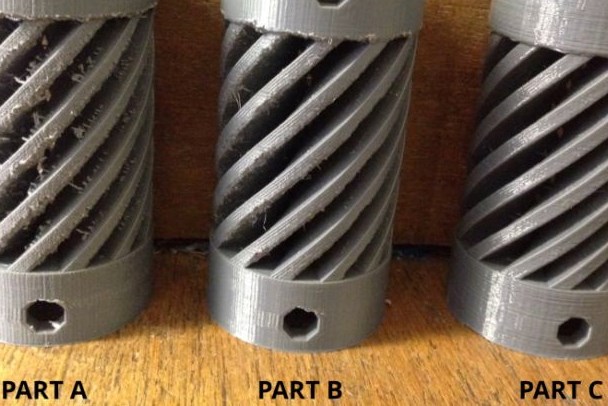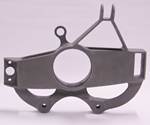3D Printing Resolution: High or Low?
When does it make sense to opt for a high- or low-resolution print? An example from Creat3D illustrates the difference.
For 2D printers and scanners, a higher resolution (more pixels or dots per inch) translates to greater fidelity and a clearer picture. Extrusion-based 3D printers have resolution too—but in this case, resolution refers to layer height, measured in microns, with thinner layers equating to higher resolution. FDM 3D printers can range anywhere from about 10 to 300 microns in layer height, also called the Z height. Print quality can vary widely even on the same printer when the resolution is changed.
Take a look at the photo below. 3D printer supplier Creat3D printed each of these three couplings on the same printer, in the same material and with the same settings. The only difference is that the parts were made with different resolutions, at 20-, 60- and 180-micron layer height.

You might expect that the smallest layer height (and therefore highest resolution) resulted in the best-looking part—in this case, Part C. However, the 20-micron-layer part is actually Part A, the one that looks messiest. (Conversely, Part C had the lowest resolution, at a 180-micron layer height.)
According to Jon Brydges, Creat3D director, this is the result of heat transfer: With such a small Z height, the heat from the nozzle as it applies a layer is enough to distort the layer below, resulting in a lower-quality surface finish. Other factors such as build speed and material also play a role in the quality of a print.
The lesson here is not that one resolution choice is better than another; it’s to choose the best resolution that still accomplishes the goal of the part. Part A’s surface finish could be cleaned up, but if a low-resolution print such as Part C would have been good enough for the application, that finishing time could have been better spent elsewhere. There are plenty of reasons to choose a higher resolution, but for items such as workholding fixtures or assembly tools, a low-resolution print may work just fine.
Read the blog post on Creat3D’s site for more information and an additional example.
More stories that mention layer height/Z height:
Related Content
-
Drones Take Flight with Metal and Polymer 3D Printed Parts: The Cool Parts Show Bonus
Drones produced by Cobra Aero now incorporate many 3D printed parts made through laser powder bed fusion and Multi Jet Fusion processes.
-
AM 101: Digital Light Synthesis (DLS)
Digital Light Synthesis (DLS) is the name for Carbon's resin-based 3D printing process. How it works and how it differs from stereolithography.
-
8 Cool Parts From RAPID+TCT 2022: The Cool Parts Show #46
AM parts for applications from automotive to aircraft to furniture, in materials including ceramic, foam, metal and copper-coated polymer.

.jpg;width=70;height=70;mode=crop)













